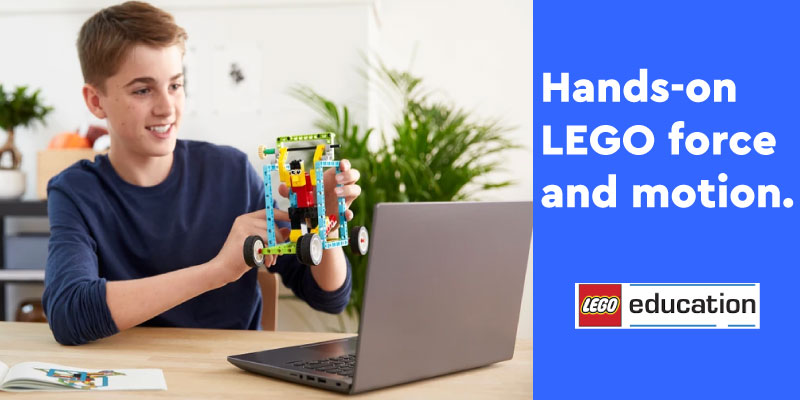You must have seen how the kite suddenly soars higher when a gush of wind hits it, on a windy day. This is a simple everyday example of how wind, a force that acts from a distance, can change an object’s motion. But what’s really happening here? How does the wind move things? Continue reading the Blog, to understand the phenomena of force and motion in detail, and also look at some interesting force and motion activities.
Understanding Force and Motion
In simple terms, force is any push or pull on an object, and motion is the change in the position of that object. Forces can come in many forms: gravity pulling you down, a hand pushing a door open, or, the wind pushing against an object. When we say that wind can change an object’s motion, we mean that the force of the wind can make an object move in a certain direction, stop moving, speed up, slow down, or change direction. Wouldn’t you agree that force and motion activities are indeed exciting topics to study?
Wind as a Force: How Does It Work?
The wind pushes against everything in its path as it blows. A flower or a piece of paper, for example, can be easily moved by the force of the wind. However, if the object is heavier – like a bag—much stronger wind would be able to move it. This is because the amount of force needed to move an object depends on its mass (how much matter it has) and the strength of the force being applied. Through force and motion activities, we may see how varying wind speeds can move various items. For example, if you blow gently on a sheet of paper, it moves slowly; if you blow harder, it moves quicker or farther.
Why Use LEGO® Education BricQ Motion Prime?
Now, if you’re wondering how to take this understanding to the next level, LEGO® Education BricQ Motion Prime is here to help. This kit is designed to teach kids the basics of physical science through hands-on force and motion activities. The kit is available in schools across Dubai and has 523 LEGO® brick elements. It allows students to build models and set up experiments to explore force and motion in action.
Getting Hands-On with Force and Motion Activities
Let’s explore some exciting force and motion activities using the LEGO® Education BricQ Motion Prime set.
The Wind-Powered Car Challenge
One of the most out-of-the-box and engaging activities is building a wind-powered car. Using the pieces from the BricQ Motion Prime set, students can construct a small car and then use a fan to blow against the car to see how it moves. Ask students to predict how far the car will travel with a light breeze vs. a strong gush of wind. Then, test their predictions and observe the results!
Obstacle Course with Wind Power
Create an obstacle course using LEGO® bricks and set up different challenges for your wind-powered car to navigate. Maybe there’s a steep hill or a sharp turn! This activity demonstrates how varying amounts of force can affect motion in different ways and teaches kids how to manipulate forces to achieve a desired outcome
Exploring Different Forces with a LEGO Pendulum
Build a simple pendulum using the LEGO® Education BricQ Motion Prime set. This classic experiment helps demonstrate the effects of gravity as a force. Students can change the length of the pendulum or the height from which it is released to observe how these changes affect the pendulum’s motion. By adding a fan, you can even explore how wind, as an external force, alters the pendulum’s swing!
Learning Outcomes of Force and Motion Activities
Through these force and motion activities, students develop a scientific mind and begin to evaluate things just like a scientist would. They ask questions, make predictions, test their ideas, and observe the results. With LEGO® Education BricQ Motion Prime, they get to see abstract scientific concepts come to life in a fun, interactive way.
- Encouraging Critical Thinking: Through building and experimenting, they develop problem-solving skills and critical thinking.
- Fostering Collaboration: Many of these activities are designed for group participation, promoting teamwork and communication.
- Hands-On Learning: The hands-on nature of these force and motion activities makes learning both engaging and effective.
When learners see how wind or any force can move objects, they start to understand the science behind everyday phenomena. With a mix of creativity, experimentation, and teamwork, students not only learn science concepts but also gain the confidence to explore and understand the world around them. So, get those LEGO® bricks out, build something amazing, and see where the forces take you!






Recent Comments